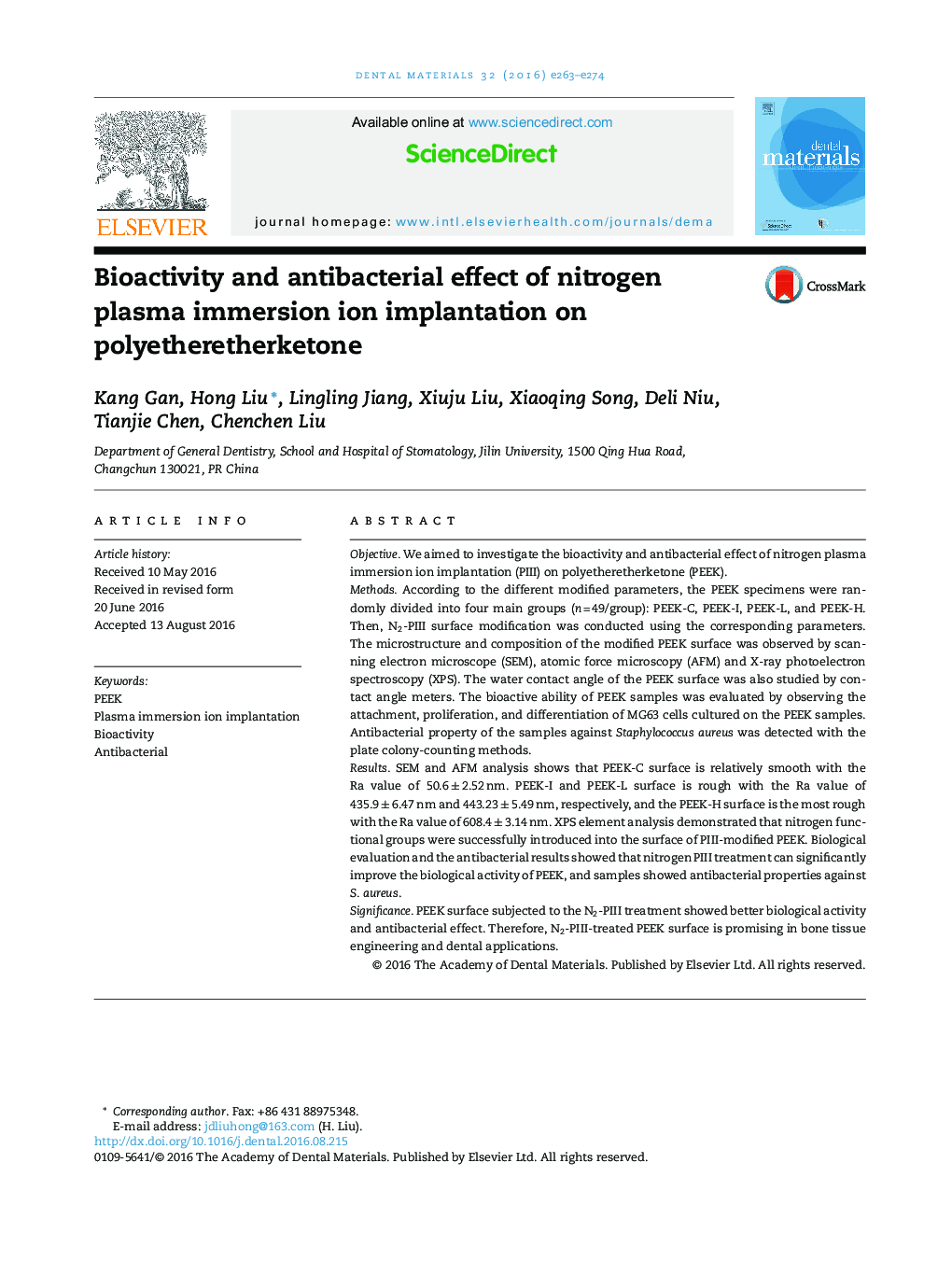| Article ID | Journal | Published Year | Pages | File Type |
|---|---|---|---|---|
| 5433206 | Dental Materials | 2016 | 12 Pages |
ObjectiveWe aimed to investigate the bioactivity and antibacterial effect of nitrogen plasma immersion ion implantation (PIII) on polyetheretherketone (PEEK).MethodsAccording to the different modified parameters, the PEEK specimens were randomly divided into four main groups (n = 49/group): PEEK-C, PEEK-I, PEEK-L, and PEEK-H. Then, N2-PIII surface modification was conducted using the corresponding parameters. The microstructure and composition of the modified PEEK surface was observed by scanning electron microscope (SEM), atomic force microscopy (AFM) and X-ray photoelectron spectroscopy (XPS). The water contact angle of the PEEK surface was also studied by contact angle meters. The bioactive ability of PEEK samples was evaluated by observing the attachment, proliferation, and differentiation of MG63 cells cultured on the PEEK samples. Antibacterial property of the samples against Staphylococcus aureus was detected with the plate colony-counting methods.ResultsSEM and AFM analysis shows that PEEK-C surface is relatively smooth with the Ra value of 50.6 ± 2.52 nm. PEEK-I and PEEK-L surface is rough with the Ra value of 435.9 ± 6.47 nm and 443.23 ± 5.49 nm, respectively, and the PEEK-H surface is the most rough with the Ra value of 608.4 ± 3.14 nm. XPS element analysis demonstrated that nitrogen functional groups were successfully introduced into the surface of PIII-modified PEEK. Biological evaluation and the antibacterial results showed that nitrogen PIII treatment can significantly improve the biological activity of PEEK, and samples showed antibacterial properties against S. aureus.SignificancePEEK surface subjected to the N2-PIII treatment showed better biological activity and antibacterial effect. Therefore, N2-PIII-treated PEEK surface is promising in bone tissue engineering and dental applications.
